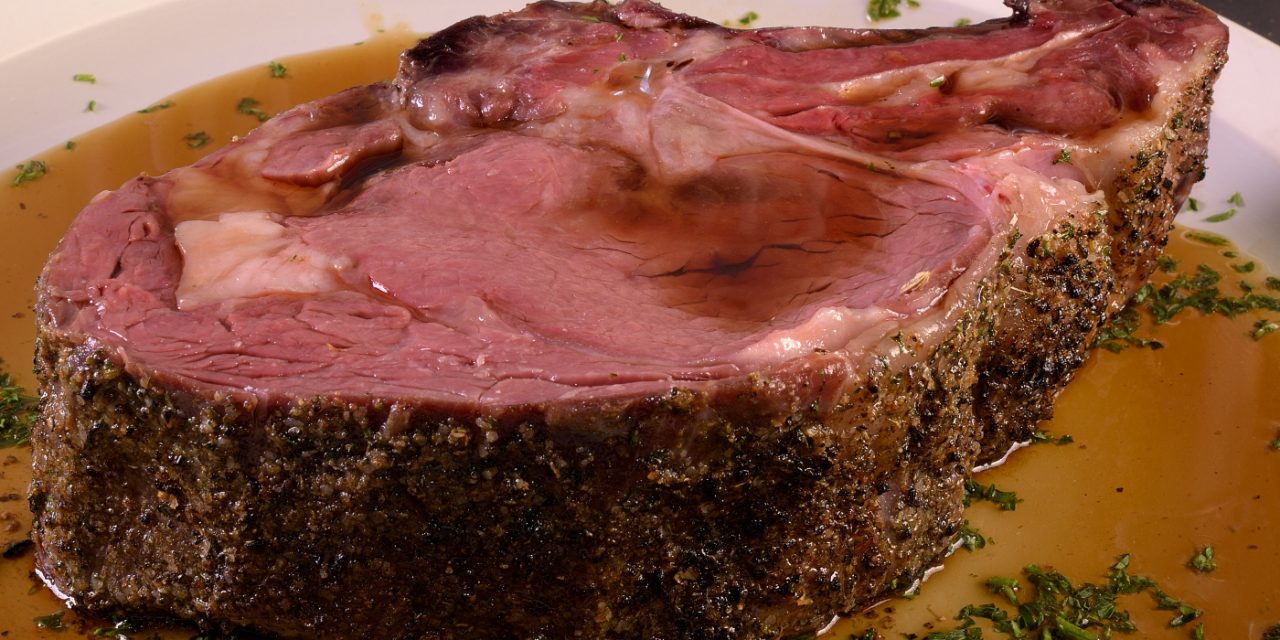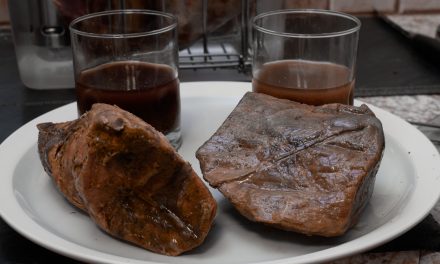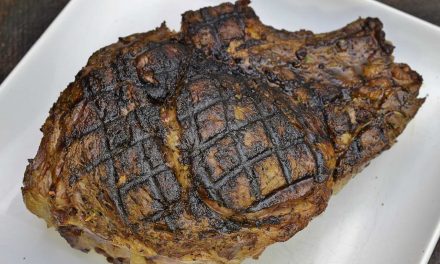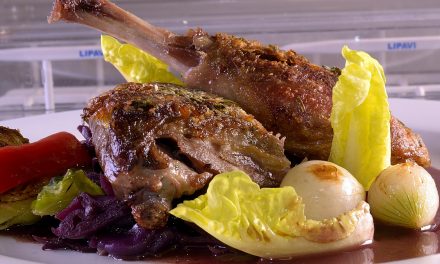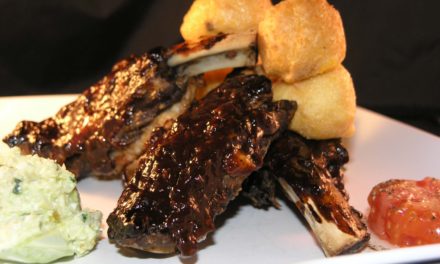Single people gain edge
In Part 1, we described the 45 day dry aging process facilitated by UMAi products. In this second installment, we use sous vide to prepare “Prime Rib” one order at a time.
Back in the day
Preparing prime rib at home was never practical. In order to achieve the desired effect, an entire 16+lb. roast had to be prepared. Hotel dining rooms had a much better chance of serving the 12+ portions that one roast provided. Entire restaurant chains were built based on this premise. The raw roast could be cut into thirds, but this still left two wasteful end cuts to contend with. There was really no other way to acquire a flavorful crust around the edge and the rare appearance on the face of each slice. So, if you wanted prime rib for dinner and your gathering was ten people or less, you pretty much had to go out. Sous vide offers an eye-opening alternative.
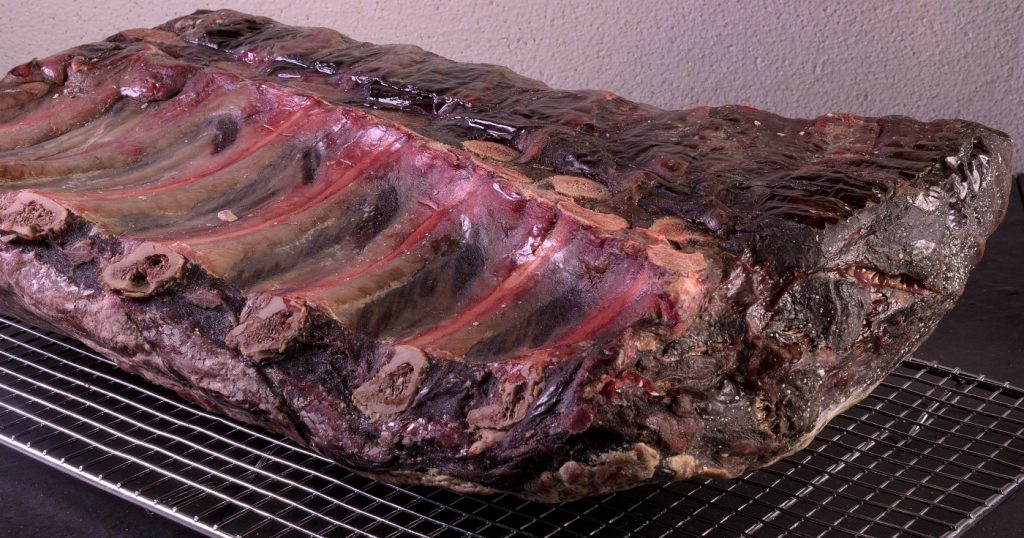
Dry aged beef
We used the same 45 day UMAi dry aged rib eye in the first installment of this series, detailed HERE. Your rib eye does not absolutely have to be dry aged. This recipe/method will work equally well for any rib eye “steak” that weighs at least 24 oz/680 g, either bone-in or boneless.
Procedure:
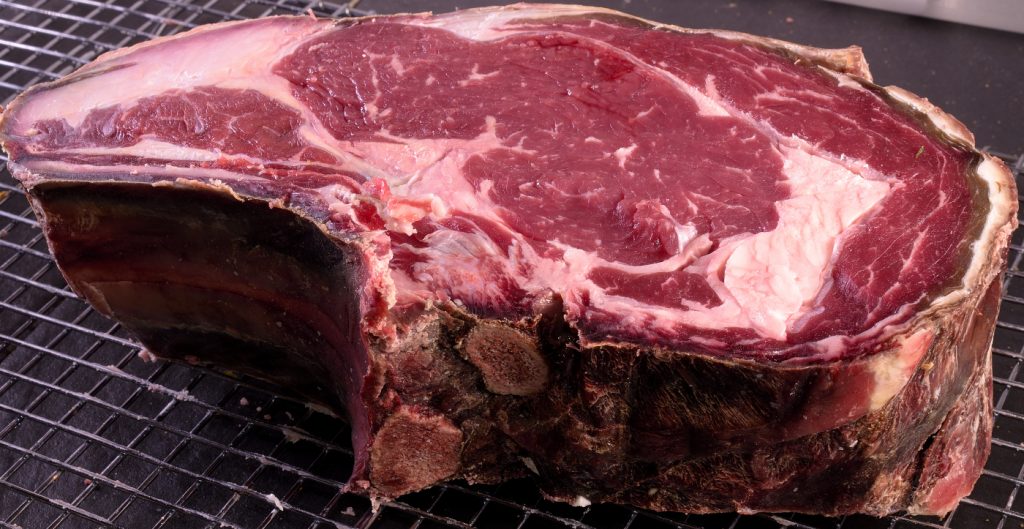
This steak was the third bone from the shoulder end, 34 oz/960 g. The pellicle was about 0.25″/6 mm thick. After careful trimming, the steak/roast weighed 30 oz/850 g.
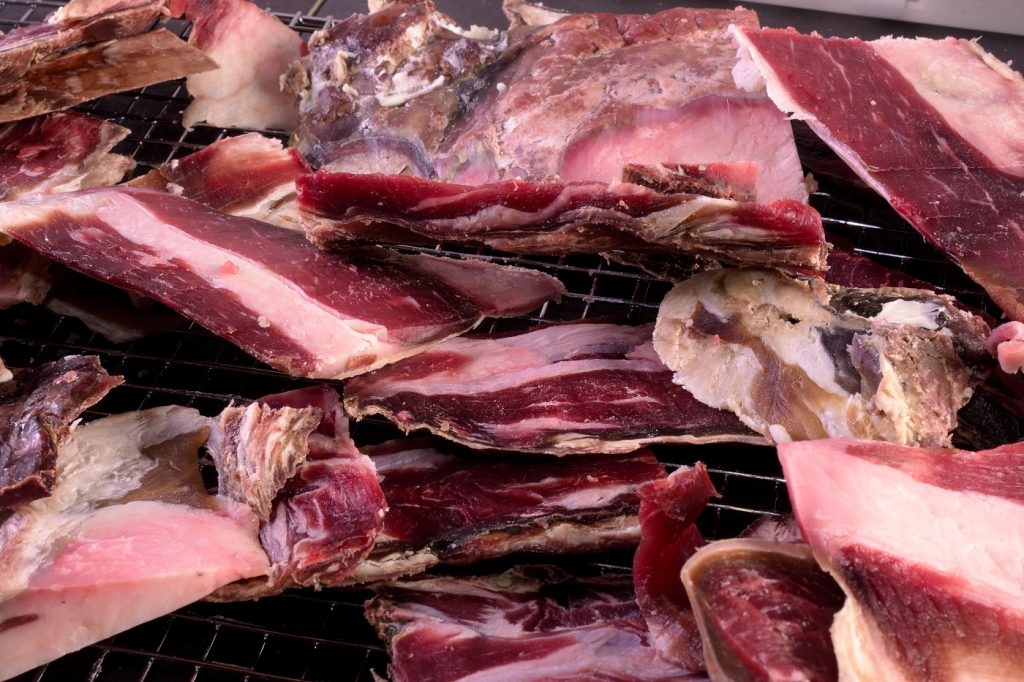
“au jus” is not a noun
The French preposition “au” can mean many things. In this context, it means “with.” “Jus” means, well, er, um, “juice.” We used the trimmings from the entire roast to make a stock/jus as explained HERE. Season the completed stock with kosher salt and keep warm. Preheat your sous vide bath to 132 F/55 C for “medium rare” or your desired degree of doneness explained HERE.
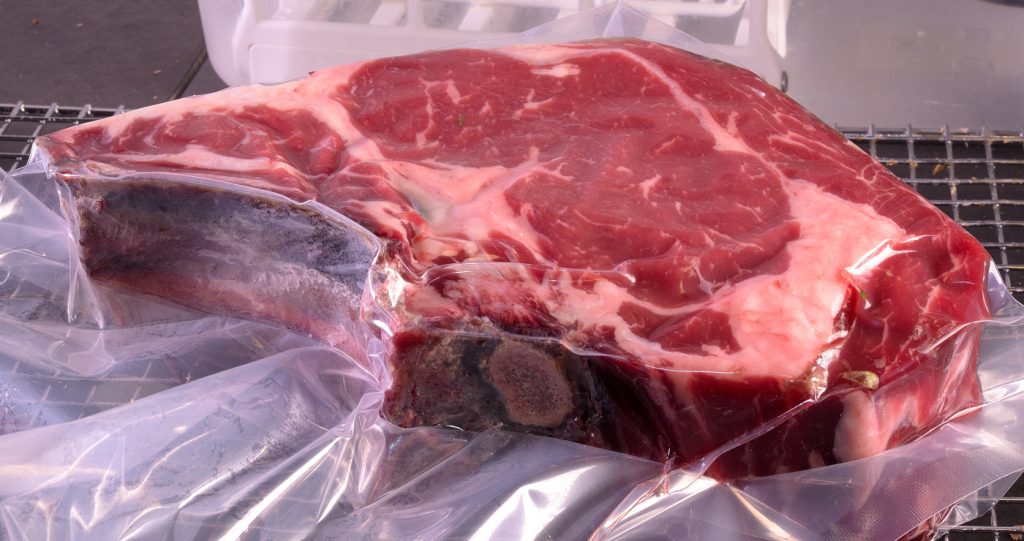
We wanted to provide a little extra insulation to protect the color of the end result. So, we vacuum sealed the cut into a sous vide bag, inserted the package into ANOTHER sous vide bag, and sealed again. Necessary to prevent excessive discoloration? Probably not. On the other hand, it’s always a good idea to double bag items that have sharp bones.
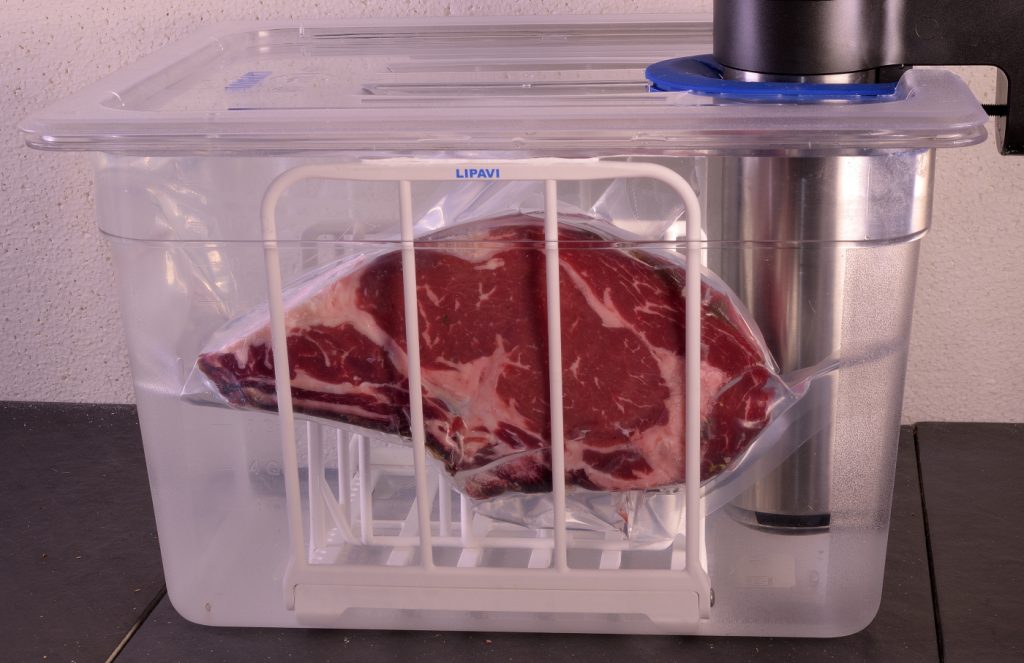
Processing
There is still some confusion about processing times and intervals. The idea is really quite simple:
1) Temperature determines “appearance of doneness”–rare, medium rare, medium, and so on. Period.
2) Time determines texture/tenderness.
Specifically, the higher the temperature, the faster the rate of tenderization. Tender cuts do not require tenderization (duh) so the time parameter need only be long enough for the geometrical center of the object to achieve the same temperature as the bath. At thicknesses of 4″/10 cm or less, this will never take more than 2 hours unless your steak is frozen. Freezer temperatures vary from 0 F/-18 C to 15 C/-9 C, so allow another “hour or two.” Putting frozen cuts in the sous vide bath is safe and recommended. Sous vide intervals are very forgiving. There is no need to use a stopwatch. Out of convenience and maybe even laziness, I almost never process steaks for less than four hours.
Further, the higher the temperature used, the greater the loss of moisture. The longer the interval, the greater the loss of moisture, and, eventually, even color. Myoglobin (not blood) is responsible for the characteristic appearance of rare steaks (and prime rib). It is heat sensitive AND time sensitive.
Long story short, we processed at 130 F/54 C for 4 hours.
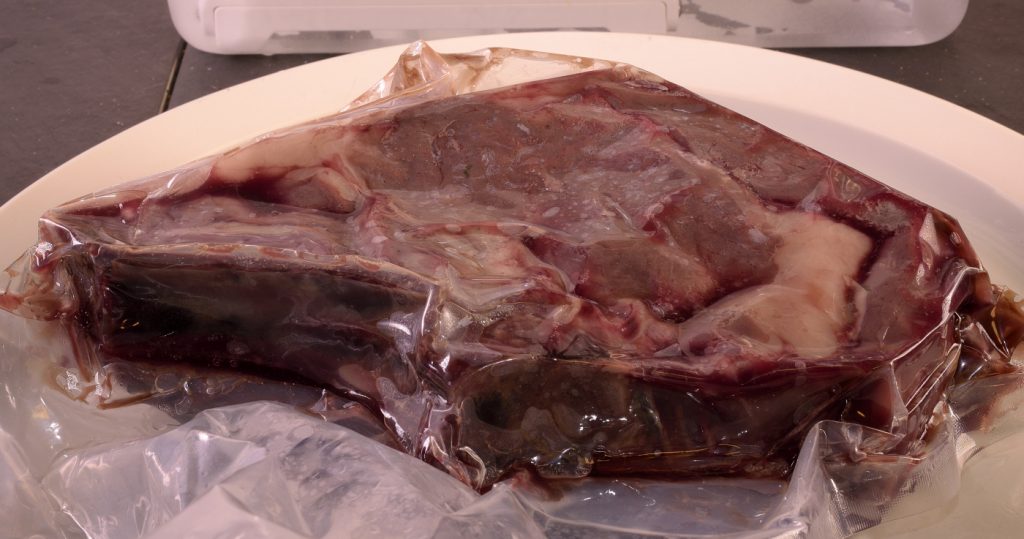
The rosy color is well preserved. 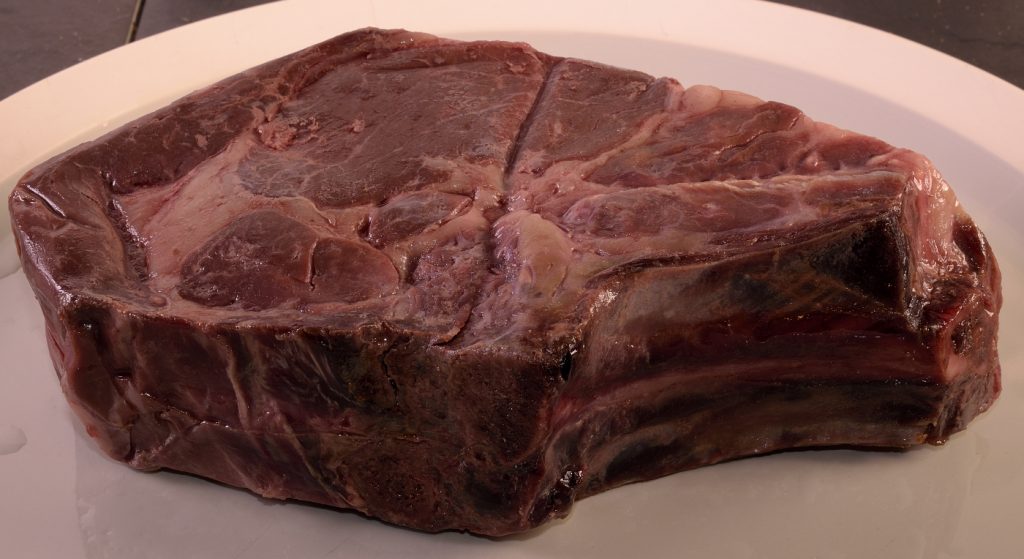
Remove from bag and harvest the juices as explained HERE.
We shaved an extremely thin (2 mm) “slice” from the surface. Ultimately unnecessary, the intention was to reinforce the appearance of having been “freshly cut.” Preheat a dinner plate in a 170 F/80 C oven. There ought to be a law against putting hot food on cold plates.
Creating the crust
Sprinkle your dedicated seasoning on a clean flat surface. Carefully coat the edge of the rib eye with the egg white solution. This creates a sticky surface for spices to cling to. Stage on to the heat proof screen.
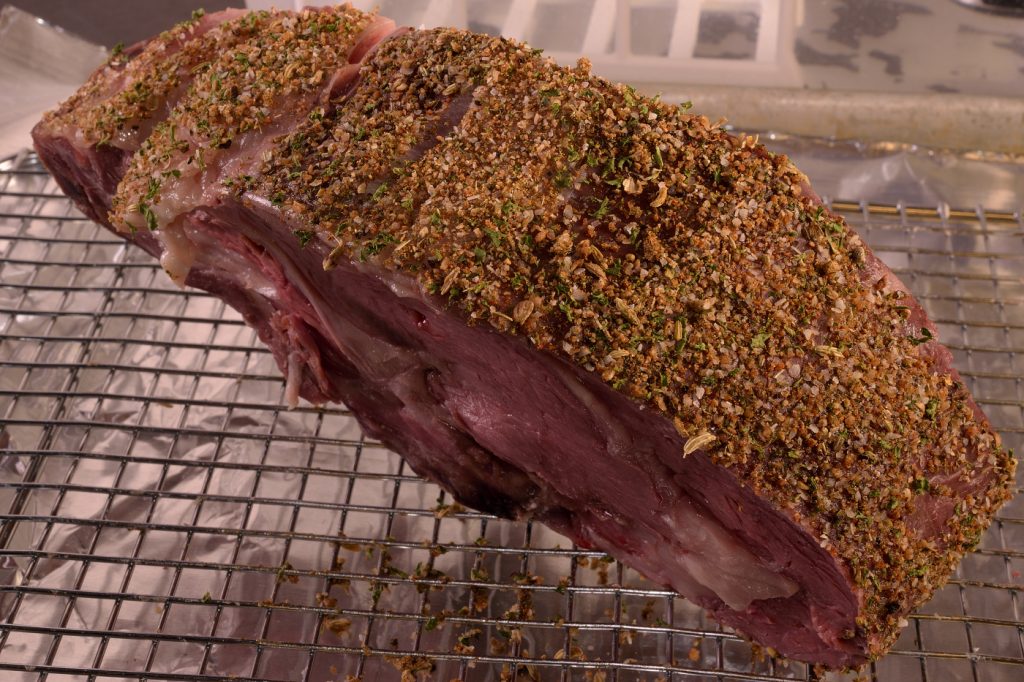
Dip or roll the edge in seasoning. 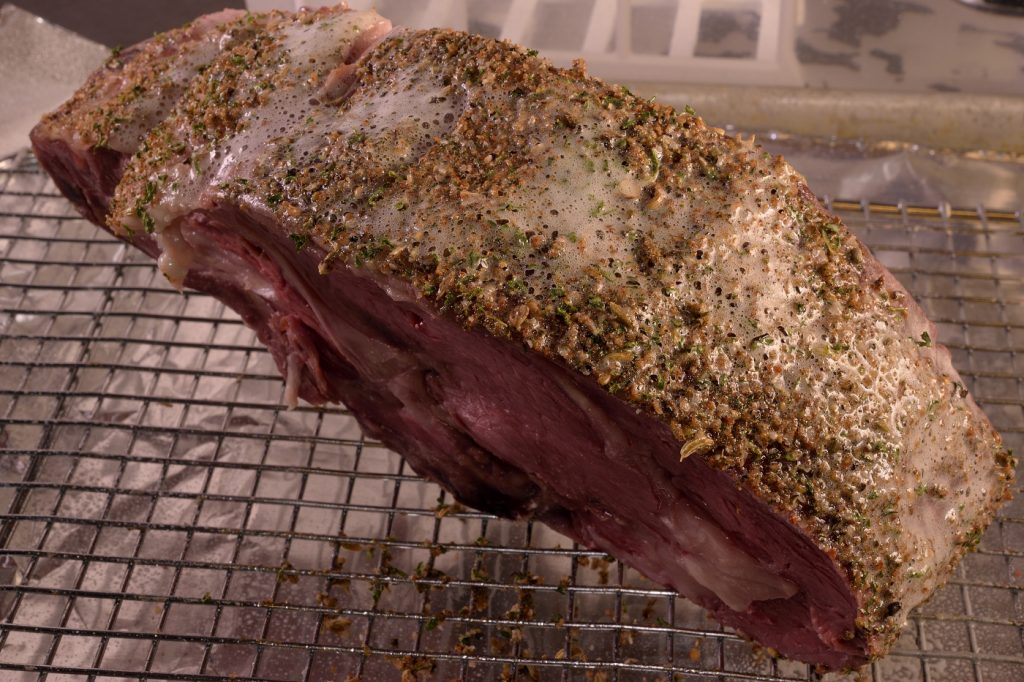
Spray or drizzle with oil. 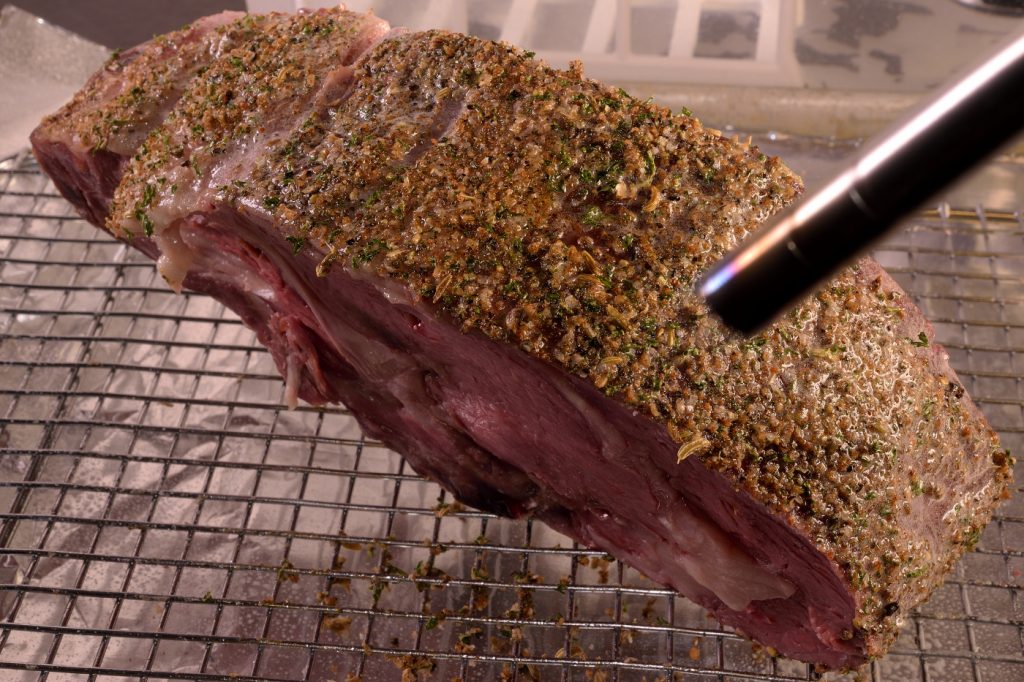
Use a torch to cook the surface. 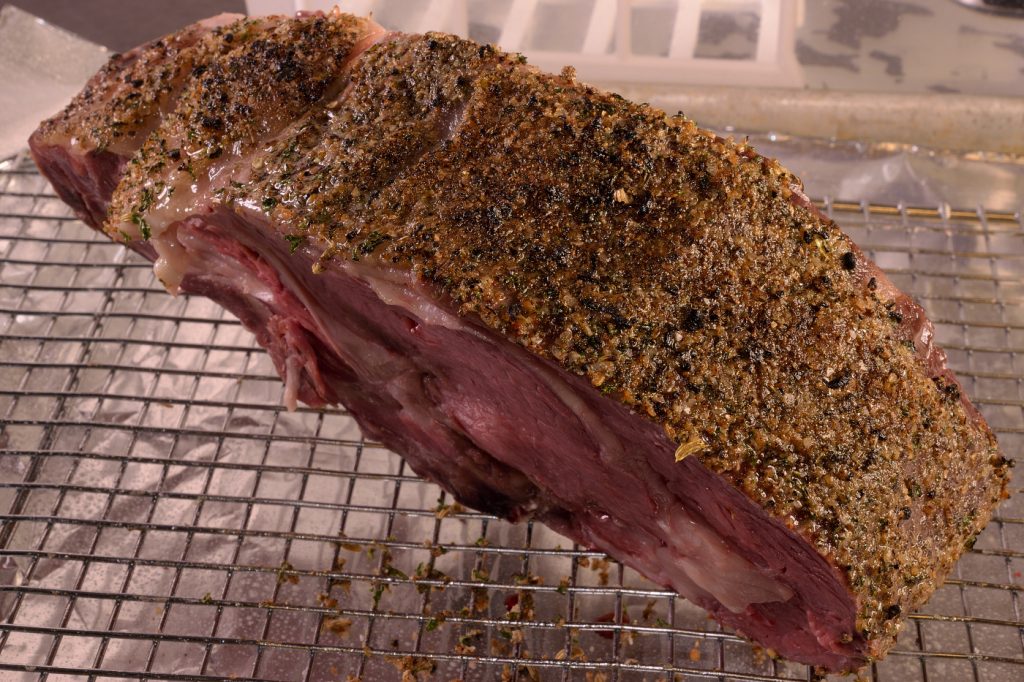
And there you have it!
The home stretch.
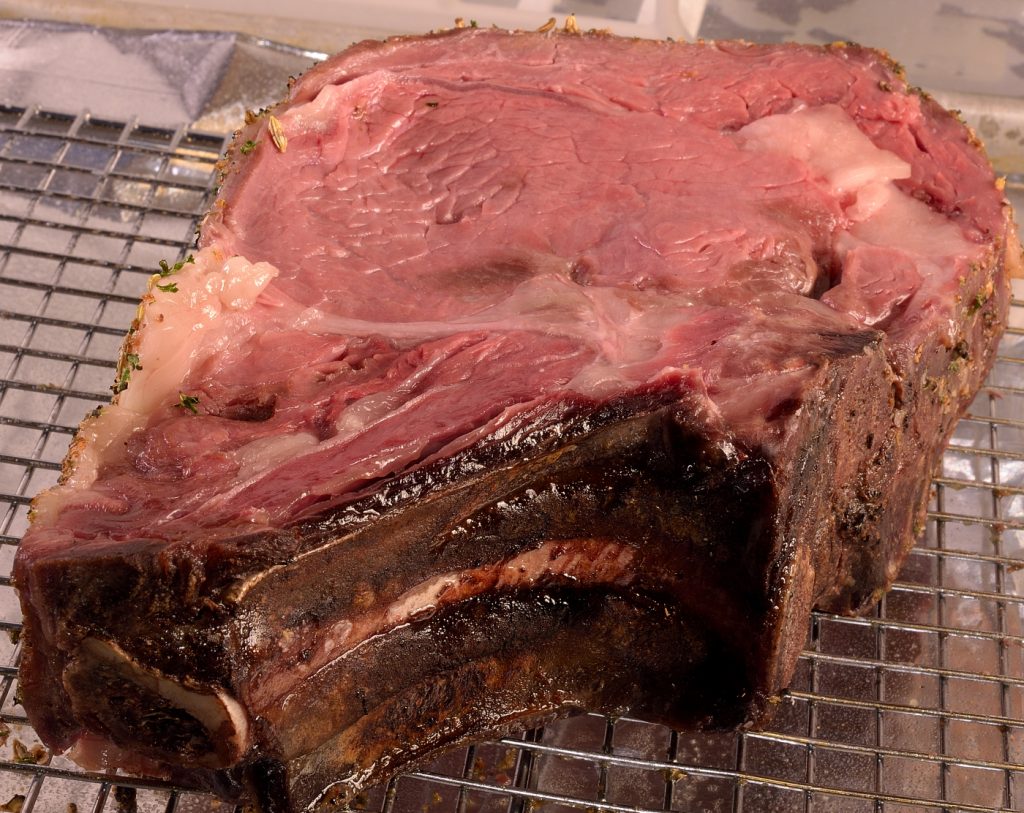
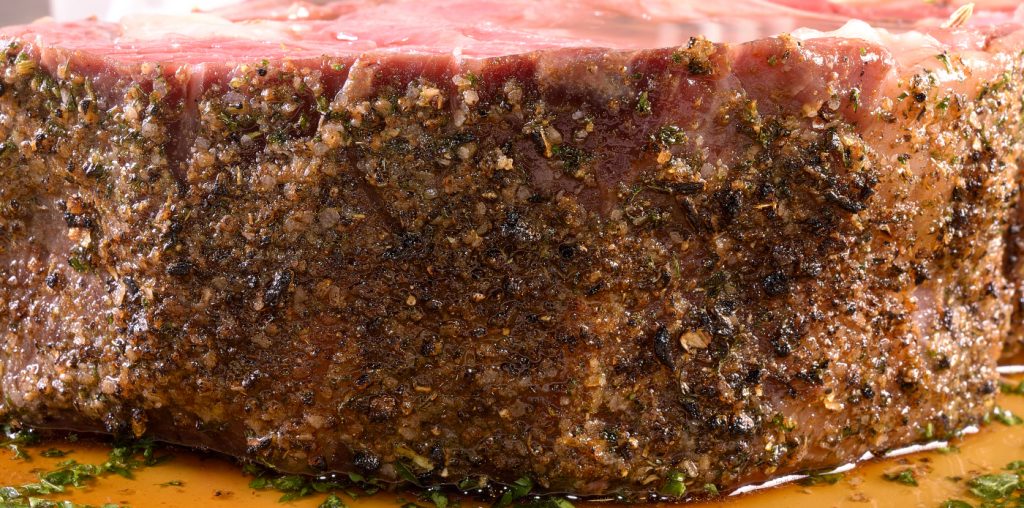
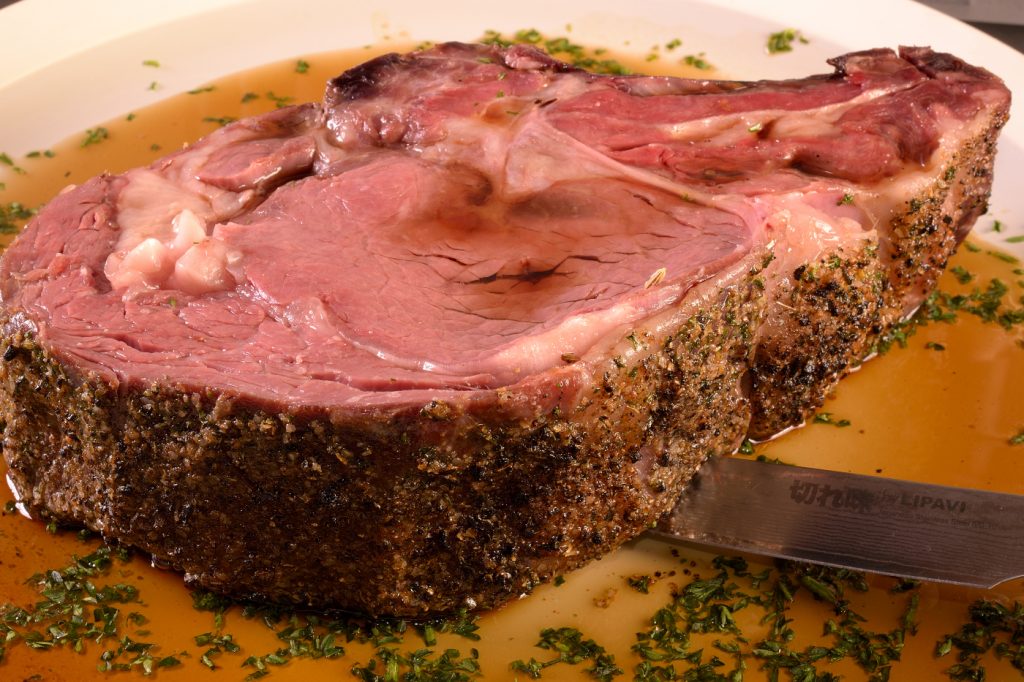
Serve with the bone pointing away from the diner. The first bite should be in the “7 o’clock” position. The Lipavi steak knife should be readily accessible to the diner’s right hand. 90% of the population uses their right hand to wield a knife.
Norm
Visit us live on Facebook at SVR–Sous Vide Resources; Low Temperature Pasteurization, Sous-B-Q™, | Facebook

